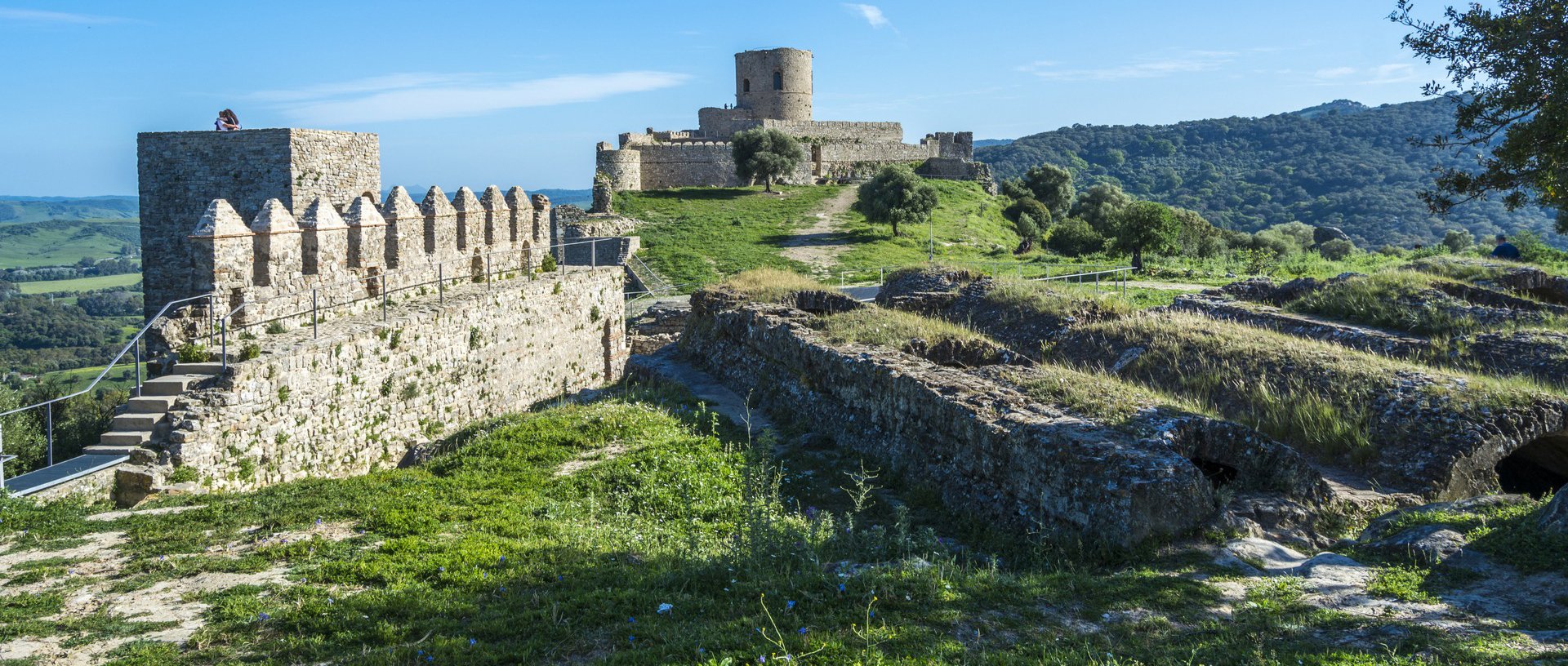About Jimena de la Frontera
From Sotogrande, follow the Guadiaro river through San Enrique de Guadiaro, then onwards to San Martin del Tesorillo. Here you cross the river on a long bridge and turn immediately left into the valley of the curiously named Hozgarganta river. What the name means or where it came from is anybody’s guess. Anyhow it is one of very few, what the Spanish call, ‘virgin rivers’, for the purity of its waters. Thirty-two kilometres after leaving Sotogrande you will arrive at the white village of Jimena de la Frontera, nestled alongside the Alcornocales Natural Park.
A history filled town
The ‘de la Frontera’ part of the name signifies that, during the reconquest of Moorish Spain by the Christians, the town stood on the frontier between the two antagonists.
Visitors wonder at the primitive depictions of ancient boats the village has adopted as its emblem. They refer to the cave paintings nearby in a cave called Laja Alta. The pictures are said to be from about 1000 BC and seem to record the first arrival of traders from the Eastern Mediterranean.
Overlooking the village, on a hill called Mount St. Christobal, is the castle; a notable feature of the landscape, visible for many kilometres around. Since the streets are more suited to donkeys than vehicles, it is wise to park halfway through the village at the car park beneath Plaza de la Constitucion.
The two, very Andalucian, café bars in the Plaza, will be a welcome refreshment stop on your return.The hike to the recently excavated and restored castle is worth the effort. It is built on a Roman foundation, during which period the town was called Oba.
Oba was abandoned by the Romans in the 4th century AD and, apparently, by the local population as well until the 10th century AD when a group of Spanish Christians established a church and settlement in the shadow of the by now ruined Roman remains. They called their village Jimena.
The Moorish occupiers of Andalucia ignored the village until around 1150 AD when they built a castle using some of the Roman remains and called the place Ximena. The Moors held it sporadically until finally expelled in 1456. The castle saw its last development during the Peninsular Wars when the wall surrounding the Moorish tower was built.
Jimena has one further claim to fame, La Real Fábrica de Artillería de Carlos III. After the British occupied Gibraltar, the Spanish, occasionally helped by the French, tried to retake the town by laying siege to the Rock. 18th-century siege tactics involved lobbing as many cannonballs as possible into the town to demoralise the inhabitants. Jimena was the ideal location for an artillery factory with its locally available wood and ‘virgin waters’. Little remains today apart from the canal used to channel the water to the factory.
Where to eat in Jimena de la Frontera
No experiences match your criteria
Things to do in Jimena de la Frontera
No experiences match your criteria
Holiday property rentals in Jimena de la Frontera
To view the beautiful holiday property rentals we have available in and around Sotogrande, please click the below button.


